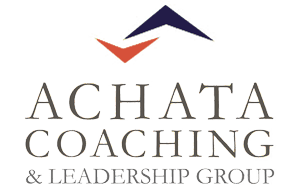How do you know if your organization is healthy and complete? I’ve found that when working with organizations, though their design and processes might make sense to the educated – most folks don’t have a clue what’s going on. In this short article, I’d like to explain simply the main focus areas of organizational design using Jay Galbraith’s Star Model. My hope is to equip you with a tool to understand how you can help your organization be smart, healthy and understandable.
In the 1960’s, Galbraith developed a model that contains, what we will call, five “levers.” These categories help answer the question of “what levers can leaders control in order to shape the behavior of their organization or team?”
An illustration might help. If you were going to design a vehicle, what would it need, at a minimum, to be a vehicle? You might say “you’d need an engine and wheels, a way to steer, stop and go.” The same is true with organizations. You need a few basic things to ensure it is an organization and works in a healthy way. See the accompanying diagram for Galbraith’s five elements.
First – Strategy
Strategy is all about direction. Where are we going? What’s most important right now? How will we behave along the way? Though these questions aren’t exhaustive, they are the kinds of questions that will help you know your plan. Knowing your strategy will define the criteria for choosing an organizational structure.
Second – Structure
Knowing your structure will help you know who has the decision making power. To know your structure, you’ll need to answer four categories:
- Specialization: what are the job specialties needed to get the work done?
- Shape: how many people need to be in each department?
- Distribution of power: will you be more centralized or decentralized?
- Departmentalization: how will you form your departments? (ie. by purpose, product, process, market or geography)
Third – Processes
Processes help us know the flow of information in an organization across it’s structure. Healthy organizations should have vertical and horizontal processes. Vertical processes are from the top down like business planning and budgeting. Horizontal processes are things like how your teams will be supervised to how customers are cared for.
Fourth – Reward Systems
Rewards are all about motivation. How will you align the energy of your employees with the direction of the organization? Will you financially reward your people or is there another way like public recognition? Galbraith suggests that your reward system must align with your structure and processes to support the direction your company is going. For instance, if a piece of your strategy is to foster a culture of teamwork, then you might consider rewarding teams instead of individuals.
Five – People Policies
This last lever of organizational structure has to do with how your human resources team will recruit and develop people. Is your organization heavy on customer contact? Then your HR team will want to look to recruit people with positive attitude and great people skills. If your company is always changing and adapting, then your HR team will need to look for and develop people who are flexible and regroup easily with change. By developing these people, you HR team is growing your organizations ability to execute your strategy.
Now that you understand the Star model, what do you do with it?
- Move past your strategy and structure once you’ve got it. If you’ll notice, the Star model has five levers – strategy and structure are only two of those levers. Patrick Lencioni would call an organization that focuses in these areas primarily, a smart organization. But is a smart organization healthy? Not necessarily.
- Focus on the people factors. Smart organizations focus on good strategy and structure. But healthy organizations focus on people, processes and rewards. Lencioni tells us in his book, The Advantage, that healthy organizations will become smart over time. Organizations that are smart, however, won’t necessarily become healthy. This is why focusing on the people factors are such a big deal. Camping out in this realm for a while will make your organization smarter over time.
Conclusion
Remember that different organizations require different structures. But no matter what kind of organization you are designing, all five levers must be taken into account. Missing only one area will leave you lacking a crucial piece to driving your “vehicle” forward.
After you’ve designed your strategy and structure, attend to the people factors. Help them know their roles, how to communicate and how they will be rewarded. Training and developing your people will ensure the creation of a culture of positivity, support and impacting performance.
So how are you doing? Which of the five areas listed needs the most work? It’s the leaders job to take people from where they are at to where they are supposed to be. Lead well. Do good work.

